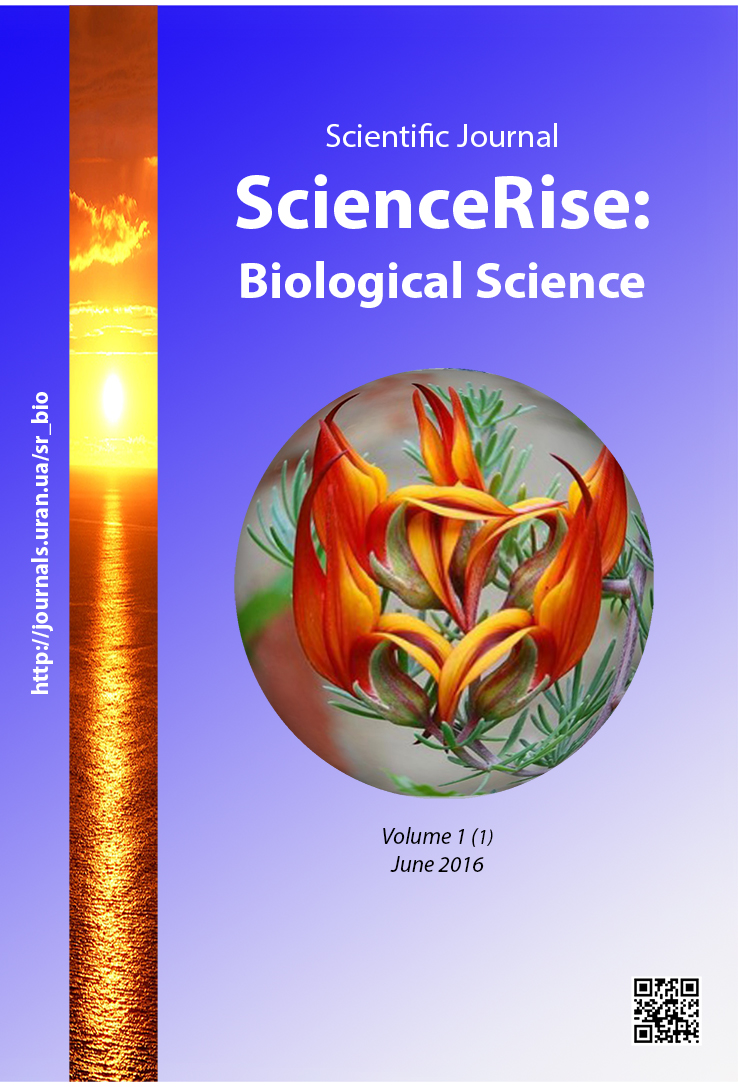Determination of Lumbricus terestris number in different soil layers from the effects of temperature and moisture
DOI:
https://doi.org/10.15587/2519-8025.2016.72813Keywords:
Lumbricus terestris, species, number of animals, soil, temperature, humidity, abiotic factors, correlation, regression, determinationAbstract
Determination of earthworm (Lumbricus terestris) number from the effects of temperature and soil moisture in concrete soil-climatic zones of North East of Ukraine was established. Studies were conducted in soil layers 0–20 cm and 20–40 cm. These layers have determined the soil fertility and agriculture. In the example of two abiotic factors (temperature and soil moisture) complex influence of environmental factors at the species was shown
References
- Dimo, N. A. (1938). Zemlyanyie chervi v pochvah Sredney Azii. Pochvovedenie, 4, 494–506.
- Gilyarov, M. S. (1960). Pochvennyie bespozvonochnyie kak faktor plodorodiya pochvyi. Zhurnal obschey biologii, 21 (2), 81–88.
- Chekanovskaya, O. V. (1960). Dozhdevyie chervi i pochvoobrazovanie. Moscow-Leningrad, 206.
- Jones, C. G., Lawton, J. H., Shachak, M. (1994). Organisms as Ecosystem Engineers. Oikos, 69 (3), 373. doi: 10.2307/3545850
- Scherbak, G. Y., Tsarichkova, D. B., Verves, Yu. G. (1996). Zoologya bezhrebetnih. Book 2. Kyiv: Libіd, 320.
- Bіlyavskiy, G. O., Furduy, R. S., Kostіkov, I. Yu. (2006). Osnovi ekologiyi. Kyiv: Libіd, 408.
- Zhukov, O. V., Pahomov, O. E., Kunah, O. M.; Pahomov, O. E. (Eds.) (2007). Bіologіchne rіznomanіttya Ukrayini. Dnіpropetrovska oblast. Doschovі cherv’yaki (Lumbricidae). Dnіpropetrovsk: Vid-vo Dnіpr. nats. un-tu, 371.
- Doube, B. M., Styan, C. (1996). The response of Aporrectodea rosea and Aporrectodea trapezoides (Oligochaeta: Lubricidae) to moisture gradients in three soil types in the laboratory. Biology and Fertility of Soils, 23 (2), 166–172. doi: 10.1007/bf00336058
- Mele, P. M., Carter, M. R. (1999). Species abundance of earthworms in arable and pasture soils in south-eastern Australia. Applied Soil Ecology, 12 (2), 129–137. doi: 10.1016/s0929-1393(99)00006-2
- Dospehov, B. A. (1973). Metodika polevogo opyita. Moscow: Kolos, 336.
Downloads
Published
How to Cite
Issue
Section
License
Copyright (c) 2016 Катерина Іванівна Бородіна, Оксана Вікторівна Товстика

This work is licensed under a Creative Commons Attribution 4.0 International License.
Our journal abides by the Creative Commons CC BY copyright rights and permissions for open access journals.
Authors, who are published in this journal, agree to the following conditions:
1. The authors reserve the right to authorship of the work and pass the first publication right of this work to the journal under the terms of a Creative Commons CC BY, which allows others to freely distribute the published research with the obligatory reference to the authors of the original work and the first publication of the work in this journal.
2. The authors have the right to conclude separate supplement agreements that relate to non-exclusive work distribution in the form in which it has been published by the journal (for example, to upload the work to the online storage of the journal or publish it as part of a monograph), provided that the reference to the first publication of the work in this journal is included.









